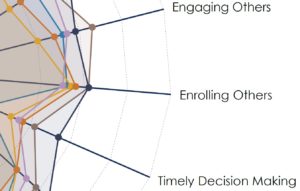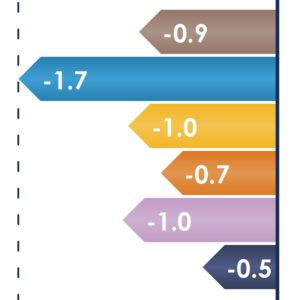
360 Surveys Part 2: Changing Culture
September 12th, 2017This is part two in a series of blogs about 360 feedback.
For a video presentation of this case study see: https://youtu.be/xRy_oBOW-3w
For a broader discussion about creating a feedback culture see:
https://starcoachshow.com/321-creating-a-feedback-culture-dr-tom-krapu-pcc/
When people think about 360 feedback they usually think about an individual getting feedback for their personal development. This certainly is a benefit of getting feedback from “all directions” (360 degrees) in one’s work life. But the impact on 360 feedback programs on an organization is often overlooked.
The choice of what a 360 feedback program measures is not random or arbitrary. Morgeson, et. al, (2005) mentions that 360 surveys “can help an organizational intervention align leadership behavior with strategy” (p. 200). This is why consultation about the 360 feedback program you have or want to have in your organization can be so helpful. Consultation can help you answer some important questions:
How can your 360 feedback program align to the values that are important to your organization?
How can your 360 feedback program support the development of the culture you want within your organization?
Case Study:
Morgeson, et. al, (2005, p. 201) cites research that suggests that 360 programs can be more accepted and effective if employees input is considered in developing the feedback survey.
One organization where I have coached the leader included the design and facilitation of a team offsite. At the offsite the leadership team created a set of competencies that they felt were important enough to give their full commitment to and hold themselves accountable to as a leadership team. These competencies defined the culture they wanted to model and hold themselves and others accountable to help create. The question was, were they doing it?
As an intermediate step, we designed a custom cultural assessment to determine the degree that people in this organization already felt that these competencies were being expressed (read lived) and the importance of each competency. This gave the organization a baseline of how well the different parts of this organization actually believed these competencies were being demonstrated and some feedback to understand the relative importance of these competencies.
Among other things they discovered that one of the biggest opportunities for them as an organization was to improve the perception the team had about the timeliness of their decisions:![]()
In addition to creating action steps to improve decision making, another next step will be constructing the actual 360 survey to give individual leaders feedback about how much they manifest these competencies themselves as leaders.
In this way the development of individuals is aligned with the desired future state of the culture of the organization. It is a win-win for both the individual and the organization. This can apply to small as well as larger organizations.
Summary:
Customizing a 360 feedback system has the advantage of actually engaging your leadership team and possibly your whole organization in defining the culture and values you want your organization and its leaders to represent.
If you are trying to create a “feedback” culture this process of culture assessment can seamlessly introduce 360 surveys into your organization and minimize resistance to a 360 program while reinforcing cultural values. And we know that culture is one of the key differentiators between successful companies and weaker brands within their industry.
But is the culture of your organization ready and conducive to receiving feedback? This will be the topic of our next Blog series on 360 feedback.
[easy_sign_up title=”Sign Up for Future Blog Entries” fnln=”1″ esu_label=”Registrants” esu_class=”InfinitePotential”]
[Contact information is NEVER shared without your specific permission.)
ref:
Morgeson, F. P., Mumford, T. V. & Campion, M. A. (2005) Coming Full Circle: Using Research and Practice to Address 27 Questions About 360-Degree Feedback Programs. Consulting Psychology Journal: Practice and Research, Vol. 57, No. 3, 196–209

